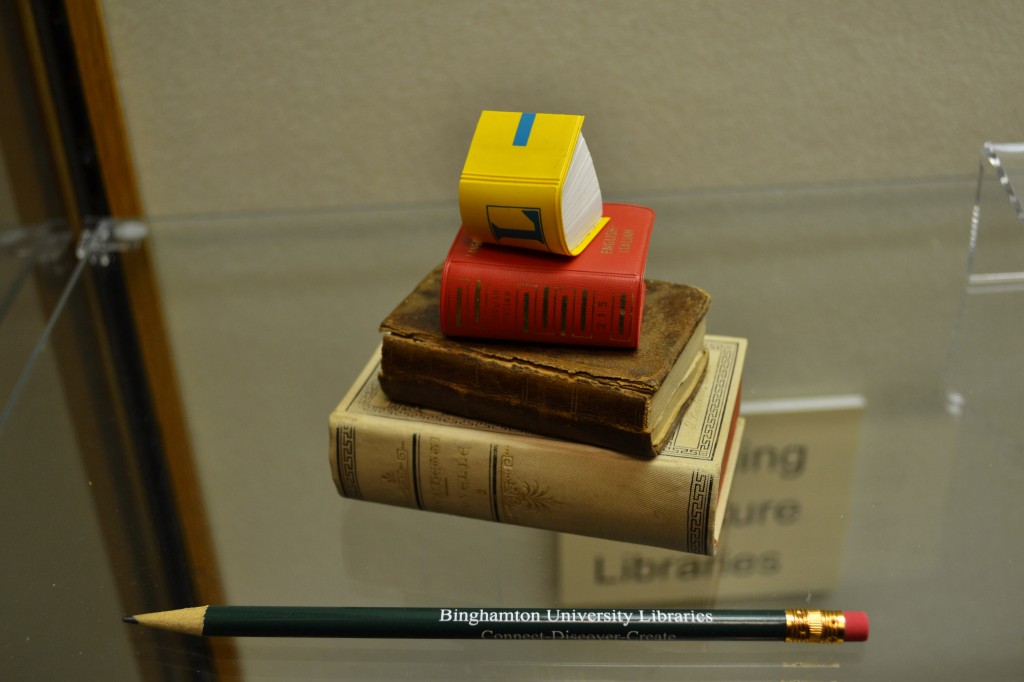
Binghamton University is serving up a small slice of history through the Miniature Book Exhibit in Glenn G. Bartle Library.
The exhibit in the Special Collections room on the second floor of Bartle opened to the public on Feb. 9. The room is lined with miniature books — classified as a book measuring at most 10 centimeters in height — in glass cases, accompanied by panels of information about the books, their authors and the history of book binding and printing.
“We want students to learn about the publishing and bookmaking history, and the different decorative treatments on paper or binding of miniature books,” said Jean Green, head of Special Collections, Preservation and University Archives at BU.
According to Beth Turcy Kilmarx, curator of rare books in the Special Collections department, miniature book printing started shortly after printing was invented as a way for bookmakers to show off their skill. The smaller the book, the more skills were needed as tinier typing, illustrations and bindings were required. She said the small size of the book not only boasted skill, but was also practical.
“It made it easy for people to carry the books around,” Kilmarx said. “Now women and men had small pouches on their clothing to carry things in, and this is where the term ‘pocketbook’ comes from.”
The Special Collections room houses roughly 116 miniature books donated to the University that date as far back as 1605 to as recent as the early 2000s. The types of books on display span from novels to prayer books to collections of poetry and short stories. They come from countries across the world, such as Russia, Spain and Pakistan.
Kilmarx worked to curate and exhibit the books because of their age and rarity, and their need for a special climate-controlled room.
“I created the collection a few years ago simply because, by their size, these books can get damaged between larger books on the shelf,” Kilmarx said.
Gina Baglieri, a sophomore majoring in biological anthropology, said the collection was a good way to get a glimpse into the past.
“I want to learn more about history and expand my horizons,” Baglieri said. “Taking a look at these miniature books firsthand would allow me to do just that.”
Despite being only a couple of inches in height, the books possess the same detailed embroidery as conventional books do. Each book has edge decorations and colored endpapers, and some covers are painted directly on panels of wood that hold the miniature books together. The books encompass five different binding styles: full leather, quarter- or half-bound, paper-wrapped or cloth.
Kilmarx said her favorite book was the New England Primer from 1814, which was only about 2 inches in height. It was a textbook used by students, and the pages were yellowed and folded. She said it was fascinating to compare the textbooks from the 19th century to the ones we use today.
The exhibit will be open the entire spring 2015 semester, and students are encouraged to visit before the exhibit is dismantled and the books are returned to their shelf in the Rare Books stacks in Special Collections.
Although the books are fragile, with certain precautions, students are able to take them out of their glass cases to flip through the pages.
“We’re open to the public and there’s no point in having these materials if people can’t touch them,” Kilmarx said. “Everyone is welcome to come in and use them. To me, this is the best kept secret on campus.”


